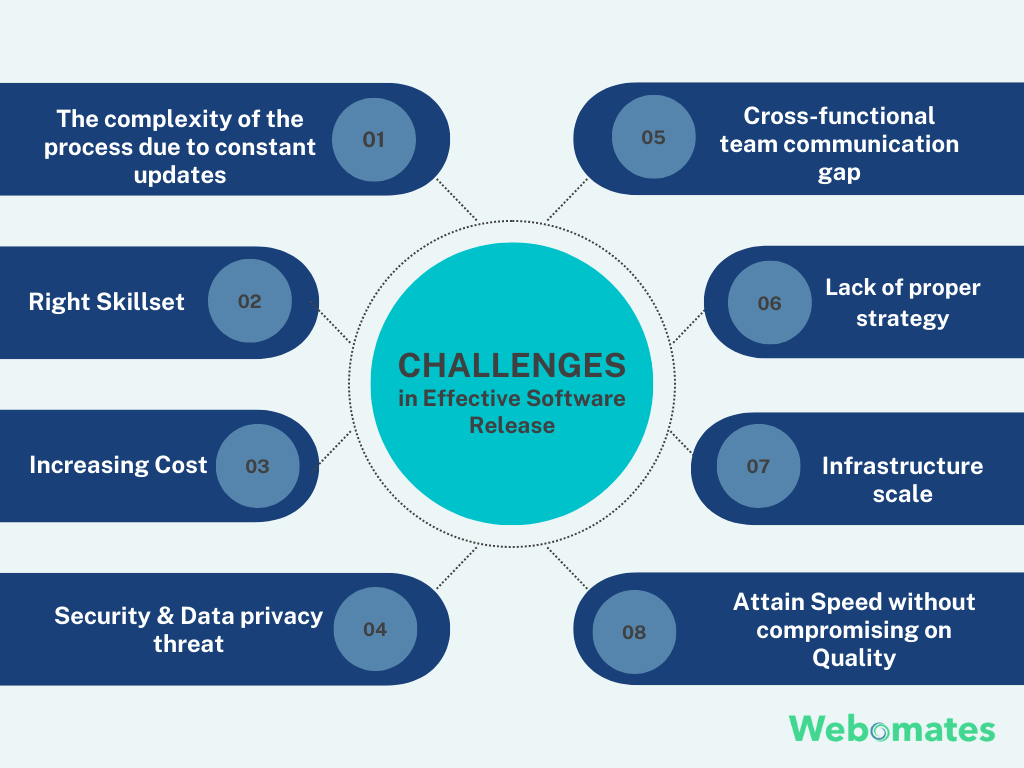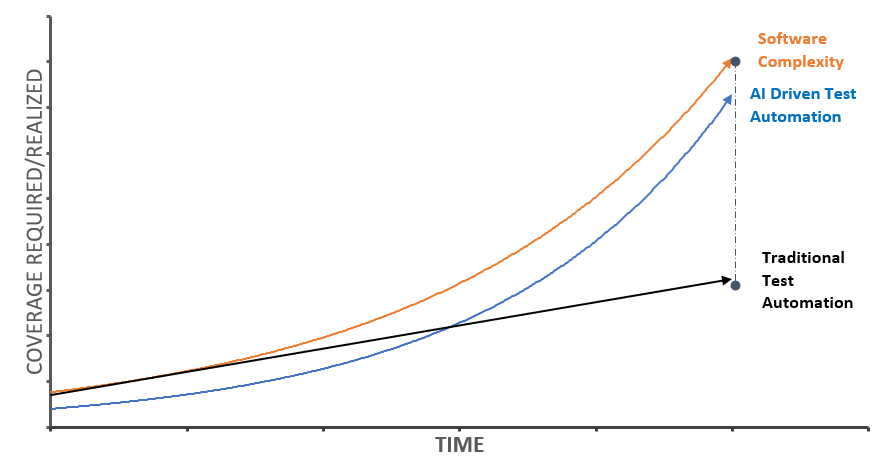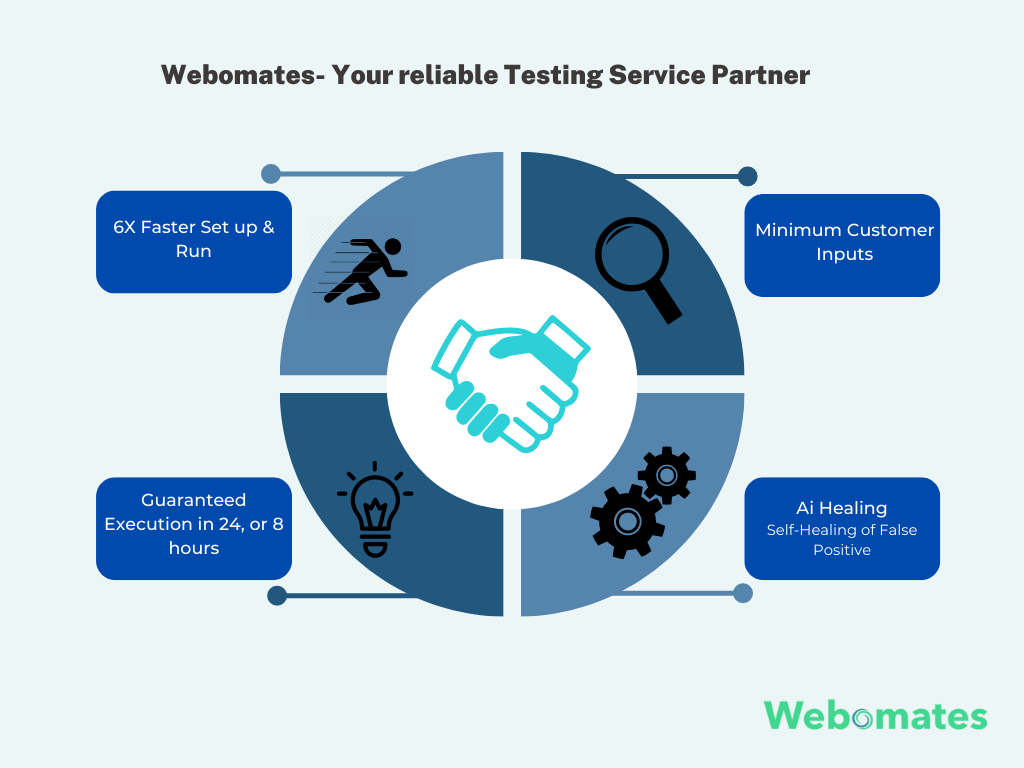Accelerate Success with AI-Powered Test Automation – Smarter, Faster, Flawless
Start free trialAI and machine learning are not only shaping how industries and businesses work but also transforming our daily lives. This transition has brought innovation to the center of product sustainability, and hence the complexities of software features are soaring like never before. Today, AI is implemented in every phase of software development from analysis, design, development of code, testing, or maintenance to release Quality software faster in the market.
Dynamic consumer requirements have given rise to the need for accelerated software releases without compromising on quality. Technological advancements have taken a 360 approach and modified their way of functioning; may it be a change in Distribution method (CD, To the internet to cloud storage), or development process (Waterfall to Agile, CI, CD, and now DevOps). But even after implementing an automation framework the whole software Release management process could not become immune to errors and release delays. As per the 2019 product manager survey from Gartner, Inc. “For the 45% of product launches that are delayed, 20%, on average, fail to meet their internal targets”. Today Companies are facing various challenges in effective software releases
8 Key Challenges in Effective Software Release:

1. The Complexity of The Process Due to Constant Updates
The frequent changes in the software increase the complexity of the release process leading to delays. The test automation frameworks are not well equipped to tackle such scenarios efficiently. Every newly introduced change takes a toll on the tester’s productivity as the Automation framework will also recognize it as a bug and the test cases and test scripts break.
2. Right Skillset
While Finding the resources with the right skillset remains the top concern for any technology company, training and retaining them becomes even more difficult and expensive in today’s dynamic environment.
3. Increasing Cost
The cost of every undetected bug keeps on increasing as the product moves into the later stages of production. In addition, test cases and test scripts break if there is a minor change in software, and it leads to high maintenance costs. More than 65% of software lifecycle cost is expanded in the maintenance activities.
4. Security & Data Privacy Threat
Security & Data privacy threat: Security flaws and vulnerabilities in software can be exploited by a hacker which would result in delays and huge financial losses.
5. Cross-Functional Team Communication Gap
Lack of communication amongst various teams leads to delays in product release as there are many teams involved in software releases like planning, DevOps, testing, QA, and deployment. In addition to the increased Work From Home trend, even teams in the same time zone are more and more NOT in the same location giving rise to even greater communication issues. To tackle this issue, companies are focusing on a well-defined product release strategy; requirement, scope, and risk factor, but bringing everyone on the same page remains a herculean task. Communication tools like Zoom, Slack, share point are trying to fill the gaps in communication.
6. Lack of Proper Strategy
Sometimes companies’ strategy goes for a toss when they set too high or too low expectations for software release in terms of timelines, resources, and scalability.
7. Infrastructure Scale
The available Automated frameworks are not capable enough to handle huge data, algorithms, and infrastructure to operate at the size, speed, and accuracy required for the newly generated complex demands of Software.
8. Attain Speed without Compromising on Quality
To match up to the ever-changing demand of consumers, companies are constantly focusing on speedy release while compromising on quality. The fast Software delivery process results in unresolved errors and inefficient product design and architecture.
How AI is Helping in Faster Software Releases
AI and ML can accelerate the software release process at different stages, especially the testing stage. Even a slight aesthetic change in software leads to broken test cases and test scripts. The automation testing recognizes it as a bug whilst the AI can differentiate between feature change and a real error/bug. AI can easily work on multiple attributes in real-time, hence, saving the time spent on daily repetitive tasks.
Also, the rampant growth in feature changes puts an extra load on software releases, as the test coverage graph can’t match these dynamics, and remains linear adhering to the limitations of adding one test at a time in both manual and automation testing. Now, as we apply AI to this process, the test coverage graph gradually increases; leading to a faster software release.

The coverage gap in software testing: Test coverage graph and this graph changes in AI testing scenario (Original Source graph: by Jason Arbon, modified by Webomates)
So, let’s run through the key areas where AI makes a huge difference in Faster software releases:
- Automates the manual tasks
- Detects the bugs/errors in the early stages of Production
- Makes data collection, processing, analysis, and reporting more accurate
- Provides Real-time solutions by not only detecting the bugs but Self-Healing them in real-time.
- Enhances Cross-Functional Team Collaboration; efficient data organization and analysis help the different teams to take well-informed collaborative decisions.
- The above processes will eventually reduce cost, time & effort e.g. Intelligent Test Automation in the testing stage results in faster Software Release.
Finding The Right AI Software Testing Solution
Finding the right AI Testing partner is not easy. While AI test automation tools lead to faster quality release, inefficient solutions will only increase the complexity of the process. Sometimes solutions are not well understood by the developers or in some cases, it doesn’t work as intended. That’s why we at Webomates don’t just do hand holding but would take the load of testing off your shoulder completely by giving you accurate, efficient, and speedy results in 24 or 8 hours with contract-guaranteed SLA (Service Level Agreements). And that makes Webomates your ultimate testing service partner as compared to a usual testing provider. Our AI defect predictor can identify False Failures with 99% accuracy, as our Patented cutting-edge AiHealing technology Self-Heals the false failures leading our customers to focus on providing fantastic products to the end consumer.
Partner with us for a stress-free software release experience.

Webomates Your Reliable AI Testing Service Partner
Please click here and schedule a demo, or reach out to us at info@webomates.com
If you liked this blog, then please like/follow us on Webomates
Tags: AI for faster Software Release, AI/ML in faster software release, Benefits of AI/ML in Software Testing, Intelligent Test Automation

Leave a Reply